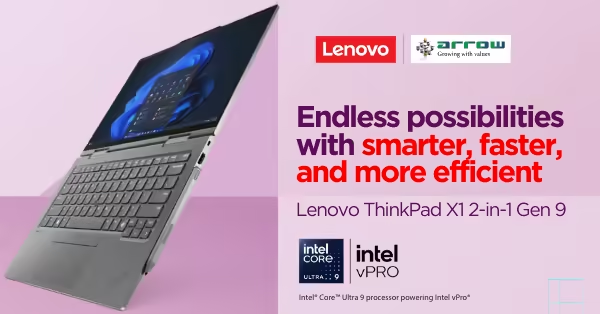When Ransomware Hits Home
Imagine starting your Monday with a call from your IT team: “We’ve been hit.” Screens are frozen, files encrypted, and a digital ransom note is staring back. Sounds like a scene from a movie, right? Unfortunately, this is a weekly sometimes daily reality for organizations across the globe.
Ransomware isn’t just a buzzword anymore. It’s a thriving criminal enterprise, and the latest case dissected by Microsoft Incident Response (formerly DART/CRSP) gives us a sobering look into just how calculated and invasive these attacks can be. But here’s the thing: while the threat is real, it’s far from inevitable.
Breaking Down the Breach
Microsoft’s security experts were called in when an enterprise discovered that a threat actor had already infiltrated their network. Using Microsoft Defender for Endpoint, the team tracked the attacker’s every move, from the first compromised login to full-blown ransomware execution.
The breach began with something painfully common: a brute-force attack targeting a device with an exposed Remote Desktop Protocol (RDP) port. You’d be surprised how often this happens—misconfigured systems remain low-hanging fruit for attackers. Once inside, the hacker used tools like Mimikatz to harvest passwords, then navigated laterally across the environment, moving through systems undetected.
Sound familiar? It should. This is the blueprint of nearly every human-operated ransomware attack today.
Initial Access: A Door Left Unlocked
The attackers didn’t need to invent a new exploit—they simply took advantage of weak perimeter defense. In this case, the RDP port (TCP 3389) was publicly exposed. From there, it was just a matter of brute-forcing credentials.
Once logged in, the attacker’s activities were subtle: no flashing red alerts, just quiet surveillance. Microsoft Incident Response detected the unusual sign-ins using their threat intelligence platform, showcasing the power of proactive visibility tools like Microsoft Defender.
Mapping the Network: Recon in Action
With a foothold established, the attacker began mapping the network. They used tools like Advanced IP Scanner to survey the landscape—looking for domain controllers, backup servers, cloud touchpoints, and user permissions. It’s not just about getting in. It’s about knowing where to go next.
This reconnaissance phase is crucial for any ransomware campaign. And it’s often the point at which organizations lose the chance to catch and contain the threat.
Credential Harvesting: Turning One Key Into Many
Credential theft followed. Tools like Mimikatz and file searches for “password” made it easy for the attacker to collect login info. With that, they gained deeper access and created backdoors to persist even if the initial entry point was closed.
In our experience at Arrow PC Network, this stage is where many organizations falter. They respond to surface-level anomalies without realizing attackers are already burrowed deep, preparing for something bigger.
Lateral Movement: Staying Under the Radar
Instead of installing noisy tools, the attacker cleverly used remote desktop sessions—the same ones your IT team probably uses daily. This is how they moved across devices unnoticed, blending into normal activity. Thanks to Microsoft Defender for Identity, investigators could map the attacker’s path retrospectively, linking user accounts, devices, and behavior patterns.
If your business isn’t layering IT Services like behavioral monitoring, you’re not seeing the whole picture. And that’s dangerous.
Defense Evasion: Hiding in Plain Sight
To avoid tripping alarms, the attackers used PowerShell to disable real-time protection. They quietly changed system settings, modified firewall rules, and used native tools to stay invisible.
It’s here where strong endpoint protection and 24/7 monitoring—like those provided through IT Services by Arrow PC Network—make the difference. Without it, security teams are often blind to these behind-the-scenes maneuvers until it’s too late.
Maintaining Persistence: Not Just a One-Time Break-In
The Sticky Keys exploit was used to create a way back in—without authentication. This is persistence 101. Even after IT “cleans up,” attackers can reappear unless deeper forensics and remediation are performed.
Microsoft’s team, in tandem with their partners and built-in telemetry, rooted out these techniques before they caused irreversible damage. But not all companies are this lucky.
The Ransomware Detonates
Once ready, the attacker launched the ransomware payload using PsExec and remote shares, triggering file encryption across the network. Backup files were deleted. Services shut down. A ransom note left behind.
This is where most stories in the news pick up—“XYZ Corp Hit by Ransomware.” But by then, it’s too late. The attack began weeks earlier.
What This Case Teaches Us
This incident underscores one truth: Ransomware attacks aren’t sudden. They’re slow burns. They exploit weak security, a lack of visibility, and complacency.
From our work at Arrow PC Network, we’ve seen how prevention, real-time detection, and response planning change everything. Whether it’s securing endpoints, patching RDP vulnerabilities, or deploying 24/7 SOCs, it’s about staying ahead.
When organizations treat cybersecurity as a one-time setup instead of an ongoing strategy, they gamble with everything.
What Now?
So, what would you do if this happened to your business? Do you have a plan? Would you even know an attacker was in your system?
You don’t need to handle this alone. Companies like Microsoft Incident Response and trusted IT partners such as Arrow PC Network exist to help you not just survive a ransomware attack, but to become truly resilient against the next one.
Because when it comes to ransomware, the question isn’t if—it’s when. The good news? You still have time to prepare.
And that makes all the difference.




